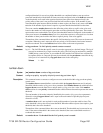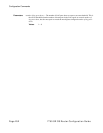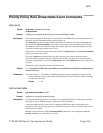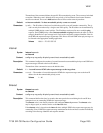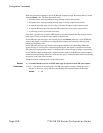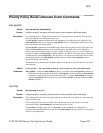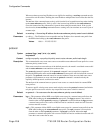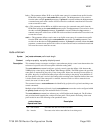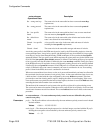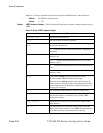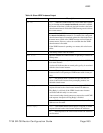
VRRP
7750 SR OS Router Configuration Guide Page 259
is-is — This parameter defines IS-IS as an eligible route source for a returned route prefix from the
RTM when looking up the route-unknown route prefix. The is-is parameter is not exclusive
from the other available protocol parameters. If protocol is executed without the is-is parameter,
a returned route prefix with a source of IS-IS will not be considered a match and will cause the
event to enter the set state.
rip — This parameter defines RIP as an eligible route source for a returned route prefix from the
RTM when looking up the route-unknown route prefix. The rip parameter is not exclusive from
the other available protocol parameters. If protocol is executed without the rip parameter, a
returned route prefix with a source of RIP will not be considered a match and will cause the event
to enter the set state.
static — This parameter defines a static route as an eligible route source for a returned route prefix
from the RTM when looking up the route-unknown route prefix. The static parameter is not
exclusive from the other available protocol parameters. If protocol is executed without the static
parameter, a returned route prefix with a source of static route will not be considered a match and
will cause the event to enter the set state.
route-unknown
Syntax [no] route-unknown prefix/mask-length
Context config>vrrp>policy vrrp-policy-id>priority-event
Description This command creates a context to configure a route unknown priority control event that monitors the
existence of a specific active IP route prefix within the routing table.
The route-unknown command configures a priority control event that defines a link between the
VRRP priority control policy and the Route Table Manager (RTM). The RTM registers the specified
route prefix as monitored by the policy. If any change (add, delete, new next hop) occurs relative to
the prefix, the policy is notified and takes proper action according to the priority event definition. If
the route prefix exists and is active in the routing table according to the conditions defined, the event
is in the cleared state. If the route prefix is removed, becomes inactive or fails to meet the event
criteria, the event is in the set state.
The command creates a route-unknown node identified by prefix/mask-length and containing event
control commands.
Multiple unique (different prefix/mask-length) route-unknown event nodes can be configured within
the priority-event node up to the maximum limit of 32 events.
The route-unknown command can reference any valid IP addres mask-length pair. The IP address
and associated mask length define a unique IP router prefix. The dynamic monitoring of the route
prefix results in one of the following event operational states:
route-unknown
Operational State
Description
Set – non-existent The route does not exist in the route table.
Set – inactive The route exists in the route table but is not being used.



